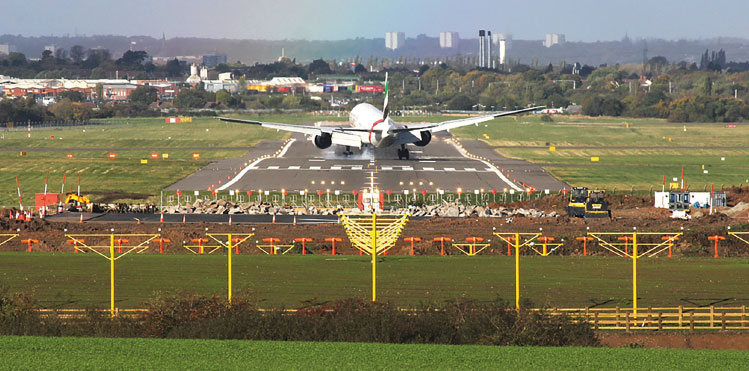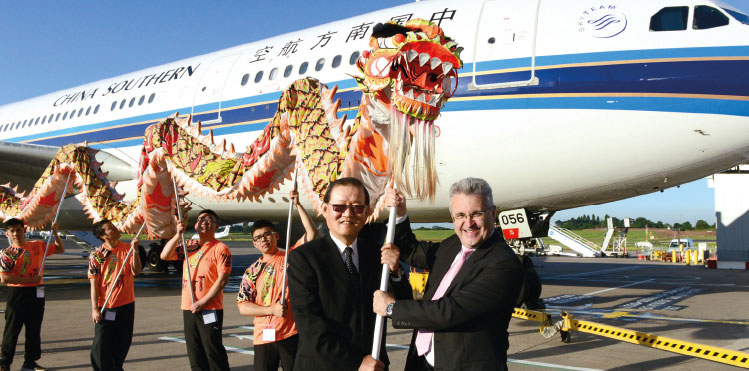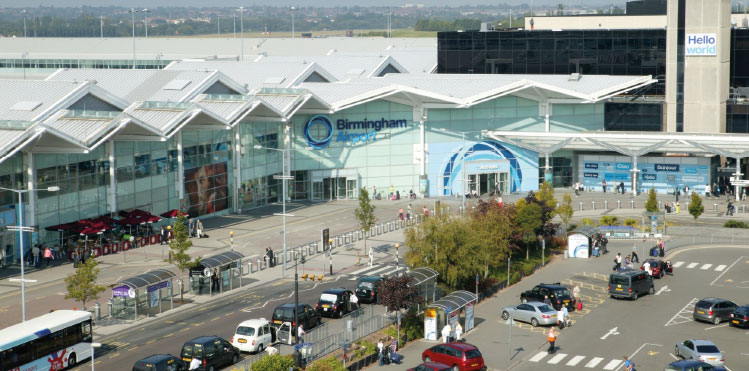
Birmingham Airport’s £40 million (€51m) runway extension saw its first use in June of this year, when it received the landmark arrival of the first direct flight from China to a UK airport outside of London.
When the British economy faced near collapse amid the global financial crisis of 2008 the aviation industry, like countless others, was jolted by its impact. Six years ago, as a result of the fiscal downturn, the UK’s airports saw a combined drop in traffic equivalent to Gatwick Airport’s annual throughput, but recent months have seen a resurgence in passenger numbers at the nation’s gateways to heights unseen since before the recession – an indicator not only that the market is recovering, but that confidence has returned to the marketplace.
The recent unprecedented growth at Birmingham Airport serves as evidence of the changing environment. April’s 16% month-on-month passenger increase at the beginning of this financial year would be the first in a series of record breaking months that continued into May, June and July – which was its busiest month since 2008. At the availability of the latest figures, August 2014 is now the busiest month in the airport’s history with just over 1.1 million passengers, while the 200-millionth passenger also flew from the facility – coincidentally in the month of its 75th anniversary. The prospering market has also prompted growth amongst the airport’s legacy carriers, and along with increased frequencies is stirring stimulation once again in its route network.
This successful summer also saw the first use of Birmingham’s £40 million (€51m) runway extension – the departure of a China Southern flight to Beijing, which marked the historical start of the only direct service between the UK and China not operated from a London airport. Work to add an extra 400m to the existing runway began in November 2012 after years of planning, and has opened a wealth of opportunity for the Midlands’ primary gateway.
Building bridges with China

Ren Jun, Vice President of CAISSA Travel Management, and Birmingham Airport CEO Paul Kehoe welcome the milestone first flight direct from China to a non-London UK airport. The series of CAISSA-chartered China Southern flights this summer was part of the airport’s strategy to eventually implement a scheduled service. “Our locality needed Indian flights, so we went and we got them on the back of what the community wanted, and now what we are hearing from our local community is that our consumers want access to China,” Kehoe said.
The landmark first flight from China to a non-London UK airport was one of a number delivered to Birmingham that summer chartered by Chinese tour operator CAISSA, which sold out with a rapidity that surprised both the airport and the operator. “They had flown to Heathrow and to Gatwick before, but this was a real coup for us,” said Paul Kehoe, Birmingham Airport’s CEO. “It was down to the fact that we’ve spent a lot of time working with Chinese tour operators and, rather than focusing on having a scheduled service from day one, demonstrating there was a demand – and that we could service that demand.”
Though its advantageous position gave the airport the opportunity to show its Chinese passengers a different England – the Cotswolds, Bicester Village, and the place where Shakespeare was born and lived – Kehoe explained that airlines from long-distance destinations such as China have a tendency to look on the UK as being “only London” and, as such, adopting a fixed route to the Far East is a challenging move, to which a slow and steady approach must be taken.
Birmingham is a pivotal industrial centre for the country. In fact, more than half of manufactured goods in the UK are produced in the Midlands, which has a flourishing automobile trade that thrives on its business with China – now the number one export market for its leading manufacturer Jaguar Land Rover. “The key thing for us is our community,” Kehoe emphasised. “Our locality needed Indian flights, so we went and we got them on the back of what the community wanted, and now what we are hearing from our local community is that our consumers want access to China. But airlines are notoriously a conservative bunch and will not take any risks, so we had to demonstrate that there was an opportunity to bring captive passengers – i.e. charter passengers – into the UK market, and that airlines can make money.” His hope is that the prosperous first flights will lead to another series of services next year, and ultimately to a scheduled service whereby the local community can make the connections they want. “Because,” he stressed, “they don’t want to fly via other hubs sometimes, and they don’t want to drive down to Heathrow. They have to because that’s the only way out there, but this was a market test – and it’s been proven that it works.”
Birmingham’s potential

“I’m not saying that we’ll pick up traffic overnight – if you’ll pardon the pun I think it will be a very long haul – but there is a real opportunity in the medium to long-term for Birmingham,” Kehoe stated. “With all the right assets now deployed, after spending £200 million (€250m) in the last five years, we hope airlines will see that there is success and profit to be made out of the Birmingham market.”
The increasing traction of an invaluable route to China demonstrates the ever-strengthening relevance of Birmingham Airport as a key gateway outside the capital, and its burgeoning passenger numbers are an encouraging sign that people are beginning to eschew London’s hubs, as more travellers choose their local airport. “We provide about 140 routes out of here to direct destinations – and then they connect on to others. Increasingly, what we’re seeing is that people are voting with their feet, and instead of flying round in circles around south London are looking for direct access,” Kehoe said.
The airport does, however, still face challenges, he explained, and in the acquisition of Chinese and Indian connections stands in the direct line of fire of competition from those airports in other economic bedrocks of the UK – Gatwick, Heathrow, and Manchester. Then, of course, there are the European hubs vying for the attention of the most valued carriers of the moment such as Air China, Hainan and China Southern – “they’ve got a plethora of airports to choose from, and if they can make more money out of Athens-Beijing than Birmingham-Beijing, then they’ll fly the aeroplane to Athens,” Kehoe commented. “But it does come back to one fundamental. And that fundamental is that the UK economy is growing – and the Midlands’ economy is growing at a faster rate. And while that continues, and there continue to be restrictions in the London market, I think that we are positioning ourselves well.”
“I’m not saying that we’ll pick up traffic overnight – if you’ll pardon the pun I think it will be a very long haul – but there is a real opportunity in the medium to long-term for Birmingham,” he continued. “With all the right assets now deployed, after spending £200 million (€250m) in the last five years, we hope airlines will see that there is success and profit to be made out of the Birmingham market.”







